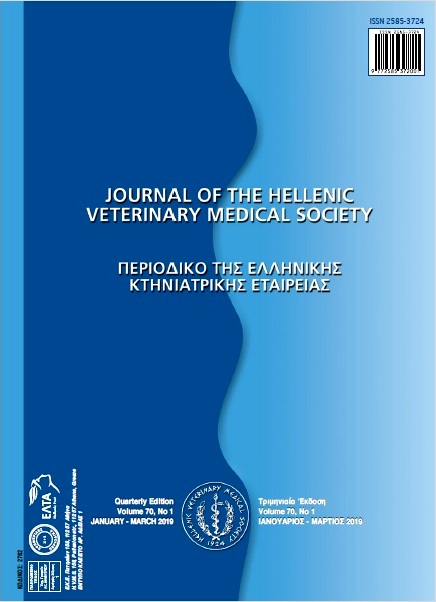Advanced diagnosis of vibriosis among some marine fishes in lake Temsah, Egypt
Resumen
Vibriosis is a serious disease affecting marine water fishes. The present study was applied on 320 marine fishes of four equal different species (Sparus auratus, Mugil cephalus, Mugil seheli and Tilapia zillii) each 80. Fishes were collected seasonally and randomly from Lake Temsah in Ismailia governorate from September
2015 to August 2016. The signs and lesions of severe septicemia, hemorrhages and ulcerations were observed among the examined fishes. Isolated bacteria were observed as yellow and green pigmented colonies on TCBS media, and as creamy colored colonies on TSA media with 2.5% NaCl concentration. The causative agent was identified as vibrio sp. Concerning gene expression, most isolates were molecularly identified using the pvsA gene primers giving a product size of 338-bp size and 348-bp for V. alginolyticus and V. parahemolyticus respectively. The highest prevalence of vibriosis was recorded in T. zillii (63.75%), M.seheli (37.5%) then M.cephalus and Sparus auratus (28.75%) while the total prevalence was (39.69%). The highest seasonal prevalence was recorded in summer (81.25%) followed by spring (35%) then autumn (23.75%) and winter (18.75%). The highest prevalence of organ specifity was in liver, kidneys then spleen and gills. The histopathological studies showed activation of melanomacrophage centers, degeneration, necrosis and congestion in liver, kidney, spleen, and gills.
Article Details
- Cómo citar
-
EISSA, I., ABOU-ELGHEIT, S. N., DESSUKI, A. A., HASSANIN, A., & MOSTAFA, L. T. (2019). Advanced diagnosis of vibriosis among some marine fishes in lake Temsah, Egypt. Journal of the Hellenic Veterinary Medical Society, 70(1), 1339–1346. https://doi.org/10.12681/jhvms.20338
- Número
- Vol. 70 Núm. 1 (2019)
- Sección
- Research Articles

Esta obra está bajo una licencia internacional Creative Commons Atribución-NoComercial 4.0.
Authors who publish with this journal agree to the following terms:
· Authors retain copyright and grant the journal right of first publication with the work simultaneously licensed under a Creative Commons Attribution Non-Commercial License that allows others to share the work with an acknowledgement of the work's authorship and initial publication in this journal.
· Authors are able to enter into separate, additional contractual arrangements for the non-exclusive distribution of the journal's published version of the work (e.g. post it to an institutional repository or publish it in a book), with an acknowledgement of its initial publication in this journal.
· Authors are permitted and encouraged to post their work online (preferably in institutional repositories or on their website) prior to and during the submission process, as it can lead to productive exchanges, as well as earlier and greater citation of published work.



